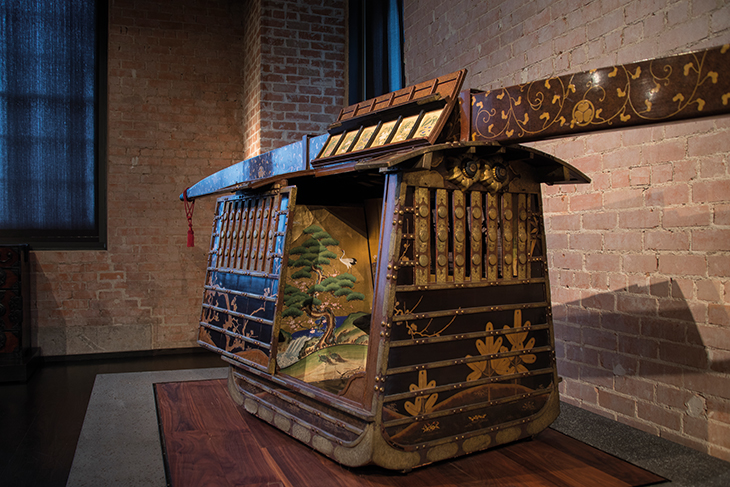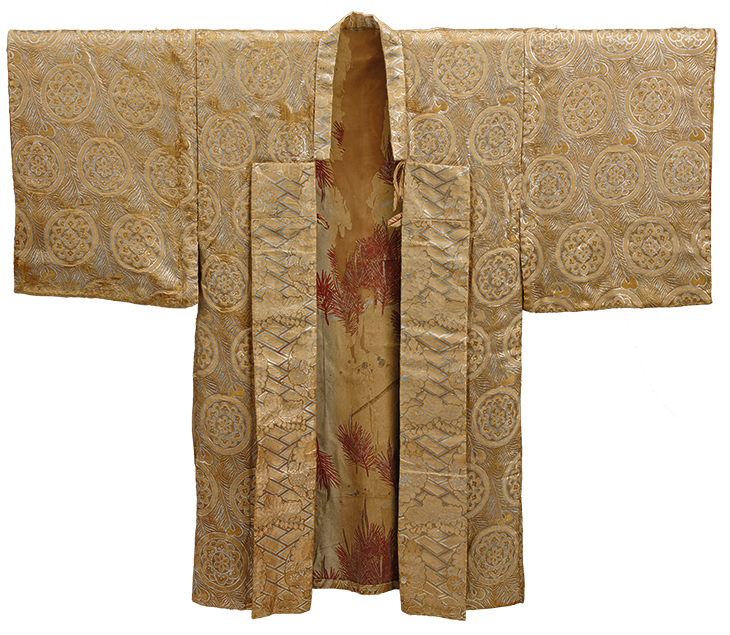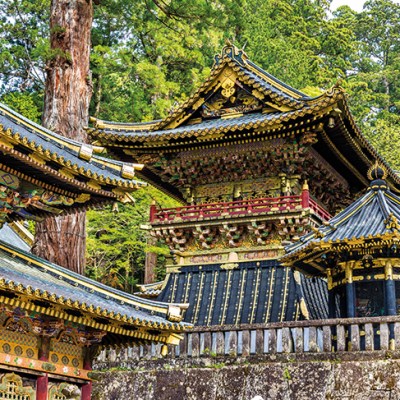Most great collectors discover art. For some, collecting is bred in the bone. That certainly seems the case with the Swiss Barbier-Mueller clan, perhaps the most extraordinary collecting dynasty of the 20th (and 21st) century. Each of the past four generations has produced passionate and prescient collectors – as a spectacular loan exhibition at La Biennale Paris in September demonstrated.
The founding father, as it were, was Josef Mueller (1887–1977), who at the age of 22 bought Fernand Hodler’s monumental frieze Der Liebe, and by 1918 had amassed seven Cezannes, five works by Matisse and the same number of Renoirs, as well as paintings by Picasso and Braque. Hit by the Wall Street Crash, in the 1930s he turned his attention to the African tribal art and antiquities that were beguiling the avant-garde poets and painters in Paris. This collection was transformed – honed, and expanded to include Oceanic and Pre-Columbian art by Josef’s daughter Monique and her late husband Jean Paul Barbier, who opened the remarkable Barbier-Mueller Museum in Geneva in 1977. Monique, however, was also buying works by the likes of Giacometti, Stella, Warhol and, later, Jeff Koons.
When I first met their eldest son Gabriel and his Texan wife Ann in 2010, it was at an exhibition in the Geneva museum presenting tribal jewellery alongside ‘jewels of the earth’, in the form of their son Alexis’s collection of minerals. With characteristic modesty, Gabriel mentioned that he and Ann were soon to open a museum to show their Samurai armour in Dallas. Before that could happen, however, Stephane Martin had secured some 140 highlights to unveil at the Musee du quai Branly in Paris in November 2011. ‘Samurai: Armour of a Warrior’ was a revelation.
In the living room, a complete set of early Edo period dangaedo tosei gusoku armour from the 17th century (left) and a 19th-century Manchu officer’s uniform flank Chinese lacquered leather Nuosu armour from the Yi culture, China, late 18th-early 19th century. Photo: Misty Keasler

Since then this capsule group has never quite made it back to Dallas, as more and more institutions have asked to borrow it (next stop, Las Vegas). To date, it has been shown in eight other venues, from Quebec to Santiago in Chile, and been seen by an astonishing 1.3m visitors. The whole collection has also grown exponentially, first with Barbier-Mueller’s acquisition of the whole collection of his friend Jean Saporta, some half-century in the making. It took him almost eight years to persuade Saporta to allow him to take it on. Over the last five years the collection has almost doubled in size, and now includes some 1,000 pieces, the earliest from the 10th century but most from the 17th century. What began as the best private collection outside Japan has been transformed into one of the most important in the world. It would not be possible to amass such a holding again.
A recent trip to Dallas left three abiding impressions, quite apart from wonder at the astounding inventiveness, technical mastery, and luxury displayed in these Japanese armours. Firstly, that Barbier-Mueller collecting still is in every sense a family affair. Secondly, that Ann and Gabriel’s interests range far beyond the arts of the samurai. Finally, and more unexpectedly, is the extent to which Gabriel’s particular focus on Japanese culture, and the honing of his eye and aesthetic sensibilities have informed his creativity as an entrepreneur.
Of course the Barbier-Mueller brothers – Gabriel, Stephane, and Thierry (all of them collectors) grew up surrounded by all kinds of art and artefacts in their family home and in their grandfather’s house in Solothurn, but they soon came to understand that collecting was not so much a hobby as a way of life. ‘It was something the whole family did,’ Gabriel explains, ‘and we were involved in it right from the beginning.’ Every family trip involved visits to the local museums, and lengthy conversations with dealers. There were always discussions about objects, and long journeys to Hamburg to pick pieces up. Once, when Gabriel’s grandfather returned from the New Hebrides with three drums that turned out of be full of large cockroaches, the sport was Thierry banging the drums while the other two shot the scurrying pests with rubber-tipped darts.
‘Every meal was like a quiz,’ Barbier-Mueller says. ‘We always had to guess or know what part of the world a pot, sculpture or mask had come from. Any new object would be placed on the table, so the training was constant.’ Jean Paul also trained the boys to scan artefacts and objects quickly but attentively, and to recognise superior or exceptional craftsmanship, be it at the flea market or in a gallery window.
In fact, it was on one such trip to Paris, when the 14-year-old Gabriel found himself with his parents in a dealer’s shop in the rue de Seine, that he had his fateful first encounter with samurai armour. ‘My parents were spending a lot of time discussing some African pieces, and I just happened to sit down next to a suit of samurai armour. It peered at me with the characteristically fierce menpo (half-mask). I was captivated by its presence, construction, complexity and the array of materials: stencilled doeskin, lacquer, and metalwork. I was immediately drawn to it but my parents explained that we did not collect such things. That created a kind of frustration that I was only able to resolve a decade later.’
A 19th-century norimono or palanquin in the Ann & Gabriel Barbier-Mueller Museum, bearing the crest of the Tokugawa clan and decorated with trees and plants symbolising resilience and perseverance. Photo: Misty Keasler

Around the same time, Barbier-Mueller visited the Wallace Collection in London, and was bowled over both by the richly inlaid Boulle furniture (which he and Ann would later collect for a time) and the European armour and helmets and not least by the monumental mounted knight. He was to conflate these two formative experiences later by displaying his samurai warriors in cavalcades. ‘England was my biggest love and where I went to learn English – although my mother says my accent betrays this,’ he laughs in his soft but still Swiss-inflected voice. ‘We were all shipped to a Wiltshire rectory to learn English, where we rode horses and visited English country houses which had collections enough to make a young man dream.’
Even so, an offer to train in a London bank did not tempt him. ‘It just did not seem exotic enough at the time,’ he says. ‘I had just come back from spending six months in Indonesia on the island of Sumba. I had decided to become an explorer and was writing a book on the island’s megalithic sculpture. Needless to say, that was leading nowhere financially. Even so, I dropped out of law school in Switzerland, finished my military service, and decided I needed to find some wider horizons. I considered Indonesia, Australia and Mexico City, but then I remembered Dallas, which I had visited with my parents on a trip with a group from the Museum of Modern Art in New York. That combined wide-open spaces with culture and seemed to have promising economic viability. It was a bit like throwing a dart and seeing where it landed.’
By this time Barbier-Mueller had already decided to follow in his father’s footsteps in the property development business. ‘Economically, moving to Dallas proved to be fantastic, for the city has grown from a population of less than a million to seven and a half million. It has a lot of vitality, and it is open for someone creative to do something which is not possible in Europe because every city is more or less already built and controlled.’ His face breaks into another smile: ‘More importantly, I had been set up on a blind date with Ann Smith – the only blind date I have ever had – and that definitely consolidated my decision to stay in Dallas. Otherwise, I might have just continued to bum around the world.’ Initially he worked for a real-estate company, and then set up a joint venture with his father before going out on his own to found Harwood International in 1988.
An open display platform in the museum, with a tachido tosei gusoku armour signed by Joshu Ju Saoteme letada and dated 1702 to the right of a boy’s armour from the 18th century (centre). Photo: Misty Keasler

The first thing that Barbier-Mueller did on receiving his commission from a year-long project finding and renovating an hotel particulier in Paris in 1980 was to go to the Louvre des Antiquaires and buy a suit of samurai armour he had long had his eye on, now fondly known as Samurai One. A few months later, he returned to Paris and bought two more. ‘They came here. We have photographs of the children wearing them in our kitchen. That launched the rollercoaster. After that, I began buying more and more books, and visiting more armouries.’
‘Here’ is the Dallas family home where the three children – Alexis, Marie-Gabrielle (Nina), and Oliver grew up, when not at Ann’s family’s ranch to the east of the city. It turns out that the ranch was used for filming early episodes of Dallas, and the one thing that the fictional Ewing family and the very real Barbier-Muellers have in common is the closeness of their family unit – happily, though, the Barbier-Mueller parents, children and their spouses get along famously. All three children have returned to the city to bring different talents to the family enterprise.
We are sitting sipping ranch tea and talking in what is still known as the Samurai Room, although the suits of samurai armour are long gone. In their place is a row of (mostly) Edo and Momoyama period helmets lining its bow window – as well as everything from an Egyptian mummy mask and Chinese funerary terracotta sculpture to Native American Zuni pottery and Turkmen and Tibetan crowns. Elsewhere, there is input from other family members, past and present, with Ivory Coast figures and Swiss paintings collected by Josef Mueller and modern and contemporary art, not least by Georg Baselitz, bought by Ann.
‘I was always attracted to pretty much everything,’ Gabriel explains, ‘but I am very three-dimensionally orientated. Ann’s interest is much more in the two-dimensional: paintings and textiles.’ He continues: ‘Ann and I wanted the children to grow up exposed to art and to history, as I had in Europe, but it is not so easy here. That is why we brought so many different things into the house.’ He pauses. ‘I think if I was collecting one thing, I would also get a little bored, and then there would be the danger of creating an encyclopaedic collection …’
That is something to which Barbier-Mueller is not likely to succumb. He buys what excites him aesthetically, which is why the samurai collection is long on sculptural and often fantastical helmets and short on weapons and blades. ‘I cannot be talked into liking something,’ he insists. ‘There may be objects that are ethnographically important, or pieces that I am told I must have in the museum – but I say I don’t have to have them. There has to be a “click” which registers that this is something special, and then I am curious and inspired to put myself into the mind of a samurai.’
Dofuku (jacket), Japan, Momoyama period (1573–1615)

‘In a way they were Renaissance men,’ he continues. ‘Apart from being warriors, they cultivated the arts of poetry, painting, gardening and music. They clearly understood the functional requirements of armour – their armours are much lighter and more flexible than their European counterparts – but the aesthetic was important too. They did not have to go to these lengths to choose rare silks for the sleeves, or have mail of such intricate design, or different lacing in various colours, or to decorate and ornament the cuirass or helmets in the ways that they did. There is layer after layer in this quest for something that is aesthetically original. No two armours are alike. You don’t realise this until you have looked at to or 20, and then you begin to understand that either the person commissioning the armour, or the person making it, went to great lengths to differentiate this suit from others while maintaining its functional integrity.’
‘Anything coming in or out of this house does so only with the blessing of “Miss Ann”,’ Gabriel continues, pointing out that she is behind the artful compositions of paintings and objects here. At this point Ann enters the room, arms wide open to give me a big, warm-hearted Texan hug. ‘I viewed each of these pieces as guests,’ she says, ‘and found a place for each of them to stay.’ She drew the line, however, at the first mounted warrior, and Gabriel, who has never liked the idea of art in storage, placed it in a lobby of one of his office buildings. More followed, and the outrage from his tenants when he dared to move what had become ‘their pieces’ encouraged them to open the Ann and Gabriel Barbier-Mueller Museum: The Samurai Collection in 2012, which is free to visit, and has twice-yearly shows and a strong educational remit – wholly appropriate, given that it occupies a former school for Hispanic children, built in 1927.
The story of these fierce yet cultivated warriors who dominated Japan for almost a millennium is told through the objects. ‘The samurai bushido code of honour was always something that interested me,’ says Ann. ‘It is important for children to understand that these warriors were well-rounded individuals and known for their integrity and fairness.’ The museum is the preserve of Nina, who, adds Gabriel, ‘protects the curatorial staff from me’. He is hugely appreciative of the fact that he ‘can collect and throw things behind me and one of them will be there to catch them.’
Our interview is curtailed by the arrival of the photographer, but it has in fact been taking place over the past few days – in the museum, and in various of the European-style gardens, cafes, bars and restaurants, and commercial and residential buildings developed by Harwood International over the past two decades across 18 blocks of the previously rundown area of uptown Dallas known as Little Mexico. That tour concluded with a visit to Barbier-Mueller’s office, known as the ‘Idea Lab’. This, too, is stuffed with works of art. On every surface, save the tables, are objects: everything from Egyptian sarcophagi and a compelling pair of lapis lazuli eyes to Etruscan helmets, a Muromachi period god of hell and a Chu Kingdom Zhou dynasty drum. Extra display space is suspended from the ceiling. Dominating all are some of the collection’s most important and arresting samurai armours, including the domaru toseigusoku armour attributed to the 5th hereditary lord of the Honda family. Most of the suit dates to the 17th century, its later yak-moustachioed mask signed by Munemasa – a family heirloom typically modified by subsequent generations.
Domaru tosei gusoku armour (detail), Japan, Momoyama period (1573–1615), with 19th-century lacing and brocade and menpo mask (c. 1700), signed by Munemassa.

Watching Gabriel engage with his objects, it becomes clear how much he is inspired by these jealously guarded treasures. ‘They are the objects that I see most, as I spend about 12 hours a day in the office,’ he explains. He jokes that they lower his blood pressure after difficult negotiations, but he means it nonetheless. Through them he is transported to another time and place and culture.
It is tempting to see that culture as increasingly informing his bold vision of urban regeneration, turning dilapidated, low-rise uptown into a district of gleaming towers and lush gardens that will one day link to downtown by walkways and cycle tracks – his bid to build upwards, reverse the urban sprawl, and make Dallas a greener, more walkable city. This nod to Japan is apparent not only in landscaping by Sadafumi Uchiyama and the new ‘twisted’ tower designed by Kengo Kuma, but also in the detail. The platform for Kuma’s building, which sits on a slope, has been built by the tsth generation of a dynasty of stonemasons who built the samurai castles. Each piece of granite was carefully selected by Suminori Awata and laid with great precision under his supervision. This whole project, like samurai armour, is not just about the solution to a problem but about aesthetics – and how extraordinary craftsmanship combined with creativity can transform what is functional into a work of art.
From the November 2017 issue of Apollo. Preview and subscribe here.


